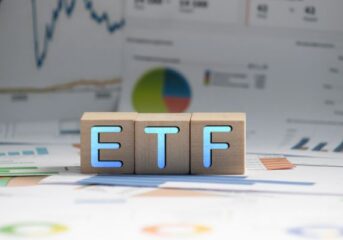When is the Best Time to Buy Crypto?
Timing is the most critical aspect of trading. Coin Hint experts believe the best time to buy coins is at their initial offering to benefit from their performance as they gain popularity. This requires thorough fundamental analysis, which many investors or traders don’t do. Once a coin comes into circulation, many factors impact its price. This article looks at those factors that can determine the best time to buy a cryptocurrency, as well as the best time of the day, week, or month to invest in cryptos.

7 Factors Affecting the Best Time to Buy Cryptocurrency
Understanding the factors that drive trading decisions is the first step to making informed decisions. Here are the factors that traders or investors typically take into consideration.
1. Supply vs. Demand
One of the primary price determinants is the supply-demand ratio. Miners work to bring more coins into circulation, increasing the supply of any cryptocurrency. Burning, on the other hand, removes coins from circulation. So, both influence supply. Although only those blockchains that do not have an upper cap on the number of coins use burning, others make mining increasingly complex over time
The demand for crypto is a function of trader interest. It rises due to the coin’s growing popularity or applications and declines with the capacity of investors.
For example, Polygon (MATIC) was launched in 2017 as a scalability solution for the Ethereum blockchain. However, this struggled to gain ground in the market. It came into the limelight in 2021 after the company rebranded itself as a bridge between blockchain networks (not just Ethereum) while leveraging Ethereum’s security model. Polygon was among the highest gainers that year, along with a 100x increase in the number of applications running on it.
2. Market News
Market news is a prominent factor driving cryptocurrency prices. DeFi token prices surged in 2021 when decentralized finance (DeFi) gained mass attention, highlighting that all fintech products like lending and P2P transactions could be integrated on-chain. Another event that made a huge impact was the sale of the NFT ‘Everyday: the first 5000 days’ for $69.3 million, which made way for the rise in popularity of many NFT tokens.
3. Government Regulation
The involvement of regulatory bodies globally is an indicator of digital currencies being here to stay. Governments around the world are taking initiatives to regulate cryptocurrencies. The measures include crypto adoption, taxing cryptocurrency earnings, and even limiting cryptocurrency use. The goal of governments is to protect traders from being scammed and eventually make way for the regulated use of cryptocurrencies within the financial ecosystem.
For instance, the acceptance of Bitcoin as the official currency of El Salvador in 2021 supported crypto prices. Also, China removing a complete ban on cryptos and allowing payments in Bitcoin also helped lift prices.
4. Dollar-Cost Averaging
This technique relies on the principle that the asset’s value will increase over the long term and involves investors buying cryptocurrencies at pre-defined intervals. They may invest a fixed amount or increase the amount incrementally. Rather than timing the market, investors use dollar-cost averaging to their advantage, which frees them from the arduous task of continuously monitoring the markets to buy low and sell high. Dollar-cost averaging can help traders benefit from long-term trends while averaging out the risk of short-term price fluctuations.
5. Diversification
Portfolio distribution is a key factor to consider when buying cryptocurrencies. Crypto gurus typically recommend keeping cryptocurrency valuation at less than 5% of the portfolio. This is due to the potential of outsized returns and significant risks associated with the cryptocurrency market. However, for beginners, this could lie between 0.5% and 2%. They can increase the share of cryptos in their portfolio as they gain a deeper understanding of the market.
6. Measured Liquidity
Liquidity lowers risk, as this ensures that an opened trade will execute at the desired price. A few popular transaction-based measures of liquidity are the Amihud ratio, Corwin and Schultz estimator, Kyle, Obizehaeva illiquidity index, and Abdi and Ranaldo estimator.
7. Measured Risks
Risk appetite is an important consideration for answering the question: When should I buy cryptocurrency? A trader’s risk-reward ratio determines when they are ready to enter the volatile digital asset market. While cryptocurrencies have offered huge rewards, they have also declined more steeply than other assets. Determining the risk-reward ratio not only helps identify trading opportunities but also helps protect a trader’s capital.
Best Time of the Day to Buy Cryptocurrency
While the crypto market is open 24×7, most traders follow the same trading hours for both fiat and cryptocurrency trading. There are 46 million crypto users in the US alone, making it the biggest market. That’s the reason the global crypto markets witness the highest activity during the NYSE trading hours. High liquidity and volatility create more opportunities for traders.

Best Day of the Week to Buy Crypto
Although cryptocurrency markets are open 24×7, exchanges are busier during typical work hours and less active during non-working hours. A general observation shows that prices start lower on Mondays, rise through the week, and drop again by the weekends. It makes Sundays and Monday mornings the best days of the week to buy crypto. Although, this only gives a small statistical advantage to the traders, therefore, it should not be the sole decision driver.
Best Time of the Month to Buy Crypto
A general trend analysis of cryptocurrencies shows that prices are the lowest at the end of the month and rise more gradually during the first half of the month. The best time to invest in cryptocurrencies may be at the beginning or end of a month.
Conclusion
What is the best time to buy cryptocurrency? There is no ‘one size fits all’ answer to this question. High volatility offers the best trading opportunities, while also representing the highest risk. Due diligence in selecting the right most popular cryptos and the right time must be paired with good risk management techniques.
FAQ
-
Is it better to buy crypto when it is low or high?
Buying the dips or buying breakouts are both valid long crypto strategies, as long as tighter stops are used when buying dips.
-
What is the best time zone to trade crypto?
The best time zone is Eastern Standard Time because the US has the largest number of cryptocurrency owners, and liquidity is higher during the trading hours of the country’s exchanges.
-
Do cryptocurrencies have common trading hours?
Cryptocurrency markets are open 24×7. So, the trading hours overlap those of the Asia-Pacific, Europe, and US Forex markets.
-
Can you buy and sell crypto on the same day?
Yes, you can buy and sell crypto on the same day. Trading strategies like scalping and intra-day trading are common among cryptocurrency traders to take advantage of price fluctuations on the same day.







